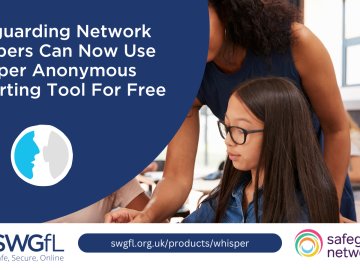With the start of the summer break, many students will be spending more time online now that schools have closed their doors. During the holidays, we are continuing to provide the knowledge and tools needed to make sure online safety remains a priority.
We’ve put together some useful guidance to help you discuss online safety with young people, supporting them to safely make the most of their online experiences this summer.
Digital Wellbeing
As young people enjoy the summer holidays, many will also be spending more time on their devices. As this time increases, it’s important to ensure that young people are able to develop healthier habits online. There are plenty of tools to support young people with their screentime management along with awareness of how their digital wellbeing can be affected through certain behaviours online. If you want to find out more about the importance of digital wellbeing, and how you can support the young people in your care, you can find a series of resources and tools help make the most of young people’s time online on our Digital Wellbeing Hub.
Social Media Usage
For many young people, social media will be an important way to stay connected with their friends over the summer, with a variety of platforms available to use. As part of their digital wellbeing, it is important to make sure that they know when to take a break online and to ensure they have effective time away from devices as well. Recently, many social media platforms have introduced new parental controls to help parents and carers support young people with their use of social media. As social media platforms introduce more and more wellbeing and supervision tools, it’s worth getting up to date on the latest features and family centre’s available to support young people.. You can find the latest information on staying safe across social media here.
Alongside this, our free social media checklists offer information and guidance over how to ensure social media privacy settings are under control. Parents and carers can take young people through these checklists to provide a better understanding of privacy and security settings.
Reporting Harmful Content
Alongside proactively supporting young people’s digital wellbeing, it is important to make sure they know where to go for support if they see something harmful online. With so many young people browsing the internet, education about how to report something harmful online is an important step to help keep themselves and other online communities safe.
Most social media platforms have reporting options for harmful content online. You can visit Report Harmful Content for advice on how to report content across most social media sites. Alongside this, there is plenty of information on organisations you can reach out to for further support.
Supporting Professionals Working with Children and Young People
Many Professionals working with young people will continue to work throughout the summer, and we have made sure that the Professionals Online Safety Helpline will be open to help with any online safety issues they, or the young people in their care, may be having.
The service provides signposting, advice, and mediation to resolve online safety issues, and is open Monday to Friday, 10am to 4pm (excluding bank holidays). To get support, you can call them on 03443814772 or email helpline@saferinternet.org.uk.
Visit the Professionals Online Safety Helpline’s website
To continue to support professionals working with children and young people throughout the summer, organisations can also explore and download Whisper; ensuring that younger age groups are provided with an anonymous and secure avenue to talk to a trusted adult about worries and concerns.
As we’ve explored, less time in school often means more time online for younger age groups. To make sure those in your care can experience online spaces in a positive way, and to ensure their wellbeing is continuing to be addressed, please do explore any of the guidance provided here. To find further guidance and support, visit our homepage.






